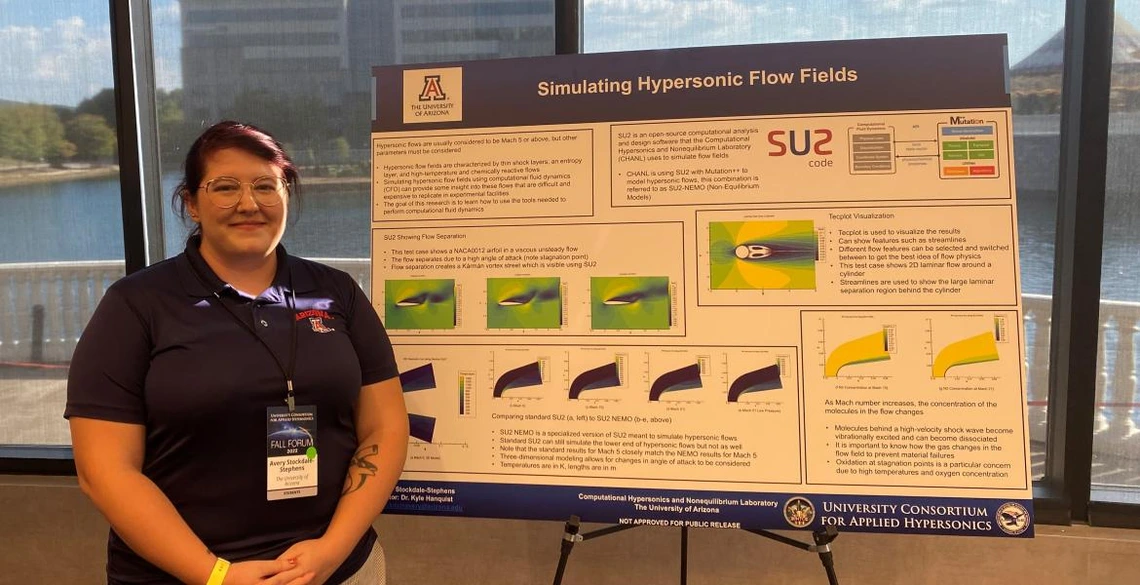Q&A: Avery Stockdale-Stephens Spending the Summer as a NASA Intern

AME graduate student Avery Stockdale-Stephens is no stranger to working with NASA. After conducting research for a NASA-funded project in the university’s ASTEROIDS Laboratory and then working as an Arizona Space Grant intern, she is now interning at NASA Ames Research Center in California’s Silicon Valley.
Stockdale-Stephens decided to look into research opportunities as an undergraduate so she could get a head start on her accelerated master’s program thesis. She spent summer 2022 conducting research in the Computational Hypersonics and Nonequilibrium Laboratory (CHANL), run by assistant professor Kyle Hanquist. She enjoyed the experience so much she decided to stay on for a Ph.D. instead, beginning in fall 2023.
What made you choose to study aerospace engineering at the University of Arizona?
I have always been really interested in space exploration for as long as I can remember. I was originally planning on studying astronomy, but after a semester, I decided that astronomy was too hands-off for me. I settled on aerospace engineering after doing some research into potential career opportunities and looking at the coursework. I’m a Tucson native, and the University of Arizona has a good engineering program, so it seemed like the obvious choice for me.
Tell us about your NASA internship!
I’m working on a project called Stratospheric Projectile Experiment of Entry Dynamics (SPEED). The basic idea is to drop a scaled-down 3D printed re-entry capsule from a high-altitude balloon to get the most flight-like conditions possible. This capsule will be instrumented with pressure sensors, temperature sensors, accelerometers, cameras, etc.
To get the capsule going fast enough, we have to stuff it inside a larger projectile that is full of weights and eject the capsule out of the larger body when it gets going fast enough. My task for this project is to model and simulate the two bodies with computational fluid dynamics to see how the wake from the larger body will interact with the capsule. I have also been helping with 3D printing and building all the different components. This project is kind of like a mixture between the previous two: I spend about 75% of my time in an office on a computer and 25% of my time in a lab working with hardware.
